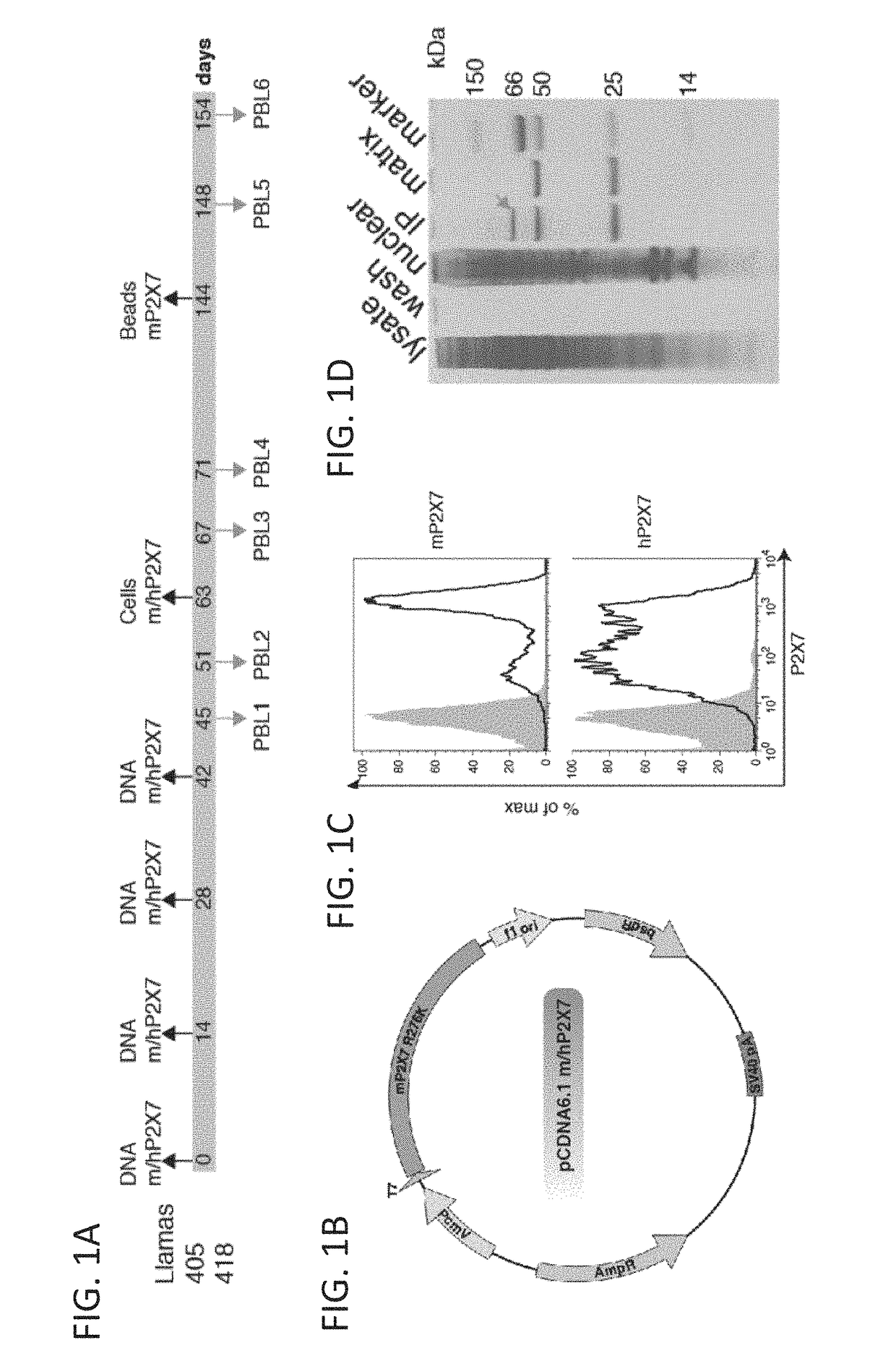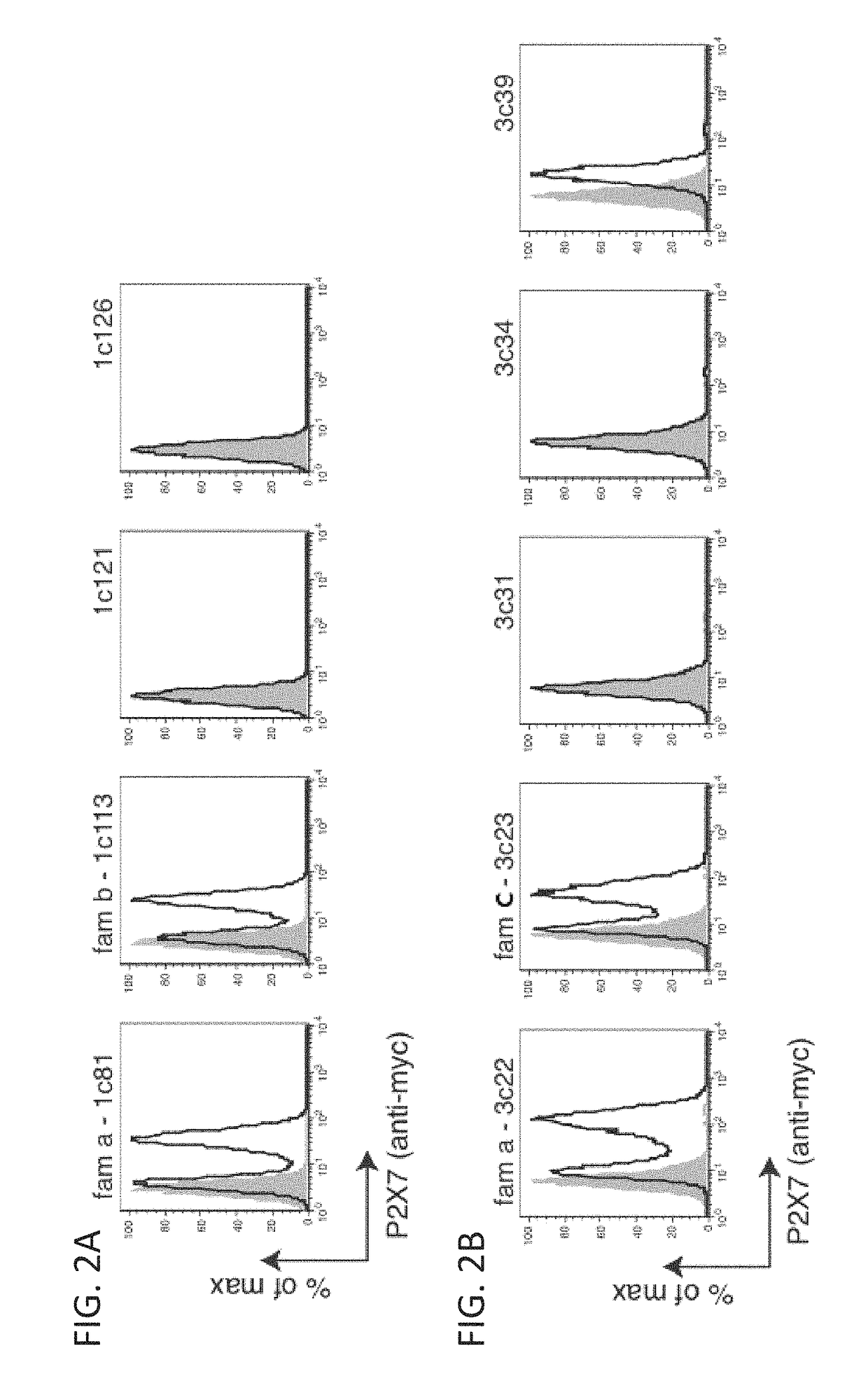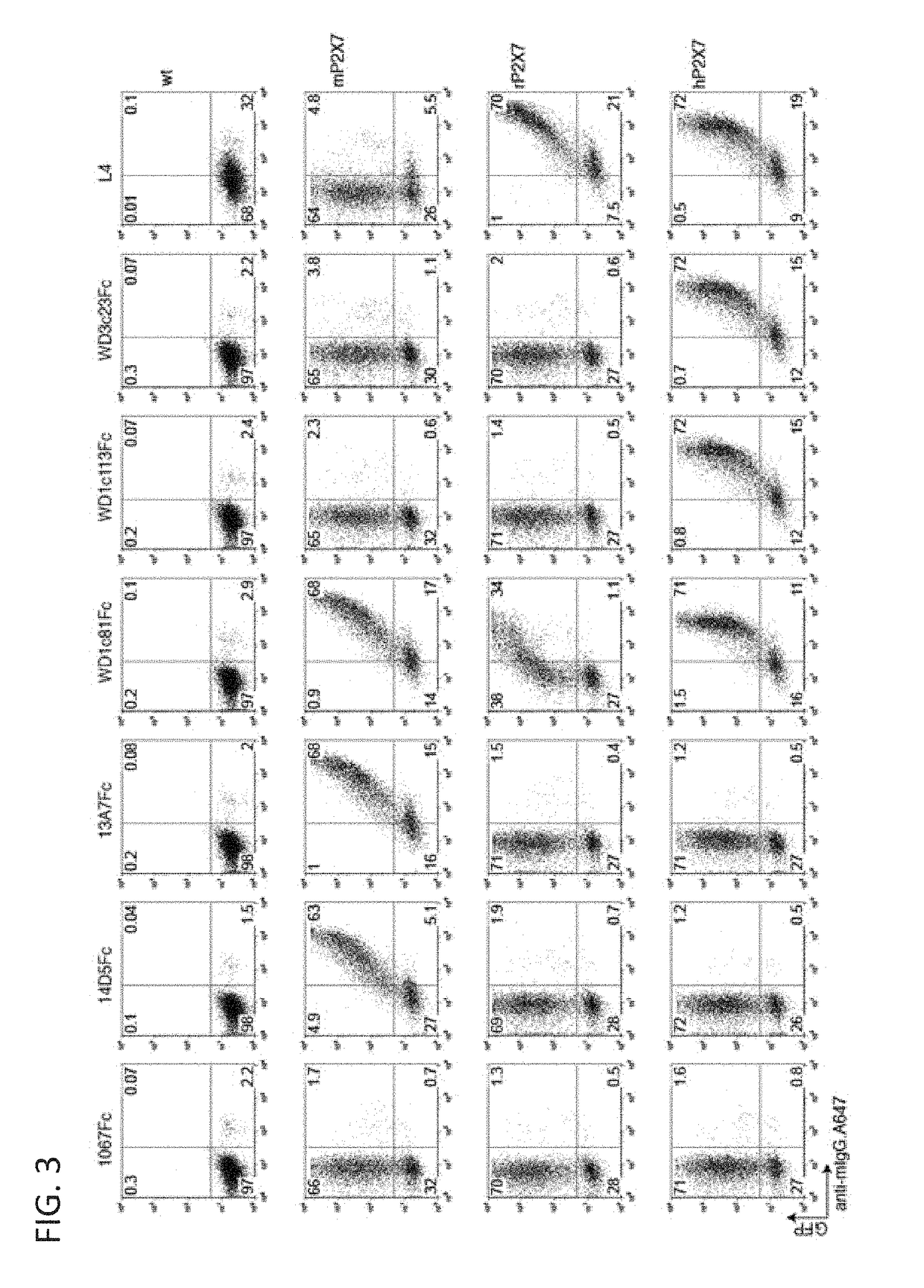P2X7 receptor antagonists and agonists
a technology of p2x7 receptor and agonist, applied in the field of biological materials, can solve the problems of affecting the development of drugs against ion channels, affecting the prophylactic, therapeutic and/or pharmacological properties of p2x7 receptor, and affecting the survival rate of p2x7 receptors, so as to improve the prophylactic, therapeutic and/or pharmacological properties, improve the ease of preparation, and improve the effect of stability
- Summary
- Abstract
- Description
- Claims
- Application Information
AI Technical Summary
Benefits of technology
Problems solved by technology
Method used
Image
Examples
example 1.1
Immunization of Llamas 405 and 418 and Construction of Phage Display Libraries
[0613]Llamas were immunized by a DNA-prime>protein boost strategy (Koch-Nolte et al. 2007 Faseb J 21:3490-3499). Llamas were immunized per gene gun (Biorad) on shaved left and right flanks with cDNA constructs for mouse P2X7 (mP2X7) and human P2X7 (hP2X7) adsorbed on gold particles (1 μm, 12 shots each with 1 μg DNA / mg gold) and boosted with the same, 3 times in 2-week intervals (FIG. 1). Three and 9 days post final DNA immunization, 100 ml peripheral blood each was collected. Total RNA was prepared from blood lymphocytes, the VHH repertoire was amplified by RT-PCR and cloned into the pAX50 in phagemid, generating phage libraries PRL1 and PBL2. Llamas were further boosted once with HEK cells transfected to stably express mP2X7 or hP2X7 (Adriouch et al., 2008 FASEB J. 22, 861-869) (2×107 HEK_mP2X7 and 3×107 HEK_hP2X7 cells, pretreated for 15 min with 1 mM ATP and then fixed in 2% paraformaldehyde for 10 min...
example 1.2
Selection, Sequencing and Initial Characterization of Human P2X7-Specific Nbs
[0614]Selections of anti-hP2X7 Nanobodies (Nbs) were carried out with combined phage libraries PBL5 and PBL6. Two selections were carried out each comprising two rounds of panning on hP2X7-expressing cells. In selection 1, phage libraries PBL5+6 (200 μl) were panned on mouse Yac-1 lymphoma cells transfected to stably express human P2X7 (2.5×107 cells). Cell bound phages were eluted by trypsinization (15 min RT) and supernatants were used to amplify phage per re-infection in TG1 E. coll. Rescued phages from the first round of selection (200 μl) were further panned on HEK cells stably transfected to express hP2X7 (2×107 cells). For each llama, clones were picked from round 2 (R2) only. Phagemids were prepared from each clone and sequenced with pAX50 sequencing primers. For expression of Nbs as single domain antibodies, pAX50 phagemid vectors were individually transformed into HB2151 E. coli. Monovalent Nbs we...
example 1.3
Reformatting of Nbs into Bivalent Molecules and Production of Recombinant Proteins
[0622]Homomeric and heteromeric dimers of Nbs 1c81, 1c113 and 3c23 were constructed by PCR, so as to insert a 35-GS linker (Sfil-Nb1-20G5-BamH1-15GS-Nb2-Notl) using long flanking primers. The VHH domains were also recloned as fusion proteins to the Fc-domain of mouse IgG1 by PCR amplification with primers flanked by suitable restriction enzyme sites (5′ BamH1, and 3′ Xhol), into the eukaryotic expression vector pME (Scheuplein et al., 2010).
[0623]Monovalent and bivalent Nbs were expressed as soluble His6x tagged proteins in HB2151 E. coli and purified from E. coli periplasma lysates by immobilized metal affinity chromatography. Bivalent Nbs were expressed as N-terminally FLAG-tagged Nb-Fc fusion proteins in transiently transfected HEK cells. Five days after transfection. Nb-Fc fusion proteins were purified from cell supernatants by affinity chromatography on M2-anti-FLAG immobilized on agarose beads. N...
PUM
| Property | Measurement | Unit |
|---|---|---|
| temperature | aaaaa | aaaaa |
| temperature | aaaaa | aaaaa |
| concentrations | aaaaa | aaaaa |
Abstract
Description
Claims
Application Information
 Login to View More
Login to View More - R&D
- Intellectual Property
- Life Sciences
- Materials
- Tech Scout
- Unparalleled Data Quality
- Higher Quality Content
- 60% Fewer Hallucinations
Browse by: Latest US Patents, China's latest patents, Technical Efficacy Thesaurus, Application Domain, Technology Topic, Popular Technical Reports.
© 2025 PatSnap. All rights reserved.Legal|Privacy policy|Modern Slavery Act Transparency Statement|Sitemap|About US| Contact US: help@patsnap.com



